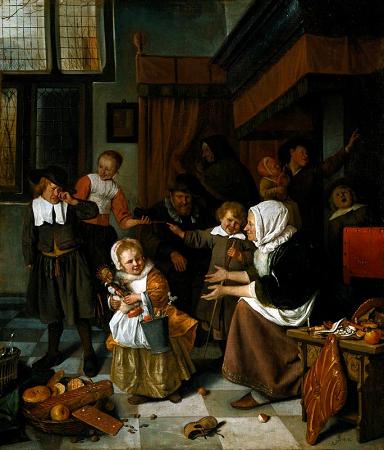Saint Nicholas. Saint Nicholas of Myra, also known as Nicholas of Bari, was an early Christian bishop of the ancient Greek maritime city of Myra in Asia Minor during the time of the Roman Empire. Because of the many miracles attributed to his intercession, he is also known as Nicholas the Wonderworker. Saint Nicholas is the patron saint of sailors, merchants, archers, repentant thieves, prostitutes, children, brewers, pawnbrokers, and students in various cities and countries around Europe. His reputation evolved among the faithful, as was common for early Christian saints, and his legendary habit of secret gift-giving gave rise to the traditional model of Santa Claus through Sinterklaas. Very little is known about the historical Saint Nicholas. The earliest accounts of his life were written centuries after his death and contain many legendary elaborations. He is said to have been born in the Greek seaport of Patara, Lycia in Asia Minor to wealthy Christian parents. In one of the earliest attested and most famous incidents from his life, he is said to have rescued three girls from being forced into prostitution by dropping a sack of gold coins through the window of their house each night for three nights so their father could pay a dowry for each of them. Other early stories tell of him calming a storm at sea, saving three innocent soldiers from wrongful execution, and chopping down a tree possessed by a demon. In his youth, he is said to have made a pilgrimage to Egypt and the Palestine area. Shortly after his return, he became Bishop of Myra. He was later cast into prison during the persecution of Diocletian, but was released after the accession of Constantine. An early list makes him an attendee at the First Council of Nicaea in 325, but he is never mentioned in any writings by people who were actually at the council. Late, unsubstantiated legends claim that he was temporarily defrocked and imprisoned during the Council for slapping the heretic Arius. Another famous late legend tells how he resurrected three children, who had been murdered and pickled in brine by a butcher planning to sell them as pork during a famine. Fewer than 200 years after Nicholas's death, the St. Nicholas Church was built in Myra under the orders of Theodosius II over the site of the church, where he had served as bishop and Nicholas's remains were moved to a sarcophagus in that church. In 1087, while the Greek Christian inhabitants of the region were subjugated by the newly arrived Muslim Seljuk Turks, and soon after their church was declared to be in schism by the Catholic church, a group of merchants from the Italian city of Bari removed the major bones of Nicholas's skeleton from his sarcophagus in the church without authorization and brought them to their hometown, where they are now enshrined in the Basilica di San Nicola. The remaining bone fragments from the sarcophagus were later removed by Venetian sailors and taken to Venice during the First Crusade. His relics in Bari are said to exude a miraculous watery substance known as manna or myrrh, which some members of the faithful regard as possessing supernatural powers. Very little at all is known about Saint Nicholas's historical life. Any writings Nicholas himself may have produced have been lost and he is not mentioned by any contemporary chroniclers. This is not surprising, since Nicholas lived during a turbulent time in Roman history. Furthermore, all written records were kept on papyrus or parchment, which were less durable than modern paper, and texts needed to be periodically recopied by hand onto new material in order to be preserved. The earliest mentions of Saint Nicholas indicate that, by the sixth century, his cult was already well-established. Less than two hundred years after Saint Nicholas's probable death, the Eastern Emperor Theodosius II ordered the building of the Church of Saint Nicholas in Myra, which thereby preserves an early mention of his name. The Byzantine historian Procopius also mentions that the Emperor Justinian I renovated churches in Constantinople dedicated to Saint Nicholas and Saint Priscus, which may have originally been built as early as c. 490. Nicholas's name also occurs as Nicholas of Myra of Lycia on the tenth line of a list of attendees at the Council of Nicaea recorded by the historian Theodoret in the Historiae Ecclesiasticae Tripartitae Epitome, written sometime between 510 and 515. A single, offhand mention of Nicholas of Myra also occurs in the biography of another saint, Saint Nicholas of Sion, who apparently took the name Nicholas to honor him.
more...










